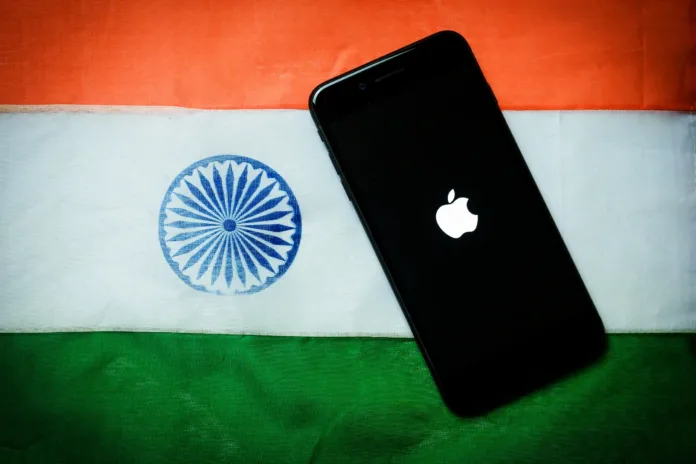Table of Contents
Apple iPhone 17 Production Expands to India
Squaredtech can confirm that Apple is making a historic change in how it produces its flagship iPhones. For the first time, the entire Apple iPhone 17 lineup destined for the United States will be manufactured in India. This decision marks a turning point for Apple’s supply chain strategy and underscores how the company is gradually moving manufacturing away from China.
According to Bloomberg, Apple has already expanded its operations across five factories in India. Two of these facilities were recently launched, highlighting how aggressively the company has scaled its production in the country. By shifting production of all iPhone 17 models to India, Apple is sending a clear message to global markets and regulators that it is committed to diversifying its supply base.
Read More About Our Article of iPhone 17 Pro Leaks Reveal 14 Major Upgrades You Can’t Ignore Published on July 7th, 2025 SquaredTech
The move also carries symbolic weight. For years, Apple heavily relied on China as the main hub for its iPhone assembly lines. However, political tensions, trade uncertainties, and supply chain disruptions have made that dependence increasingly risky. With India now producing US bound iPhones at launch, the shift has strategic implications that extend well beyond technology manufacturing.
The Role of Tata and Foxconn in Apple iPhone 17 Manufacturing
Apple’s success in India depends on local and international partners working side by side. Tata Group, a leading Indian multinational conglomerate headquartered in Mumbai, is now expected to play one of the most critical roles. Reports suggest that factories under Tata’s control could produce up to half of all iPhones made in India within the next two years. This is a significant step for India, showing that it is now positioned as a key manufacturing hub for Apple’s most important product.
Foxconn Technology Group, Apple’s longtime partner from Taiwan, is also central to the expansion. Its large production facility in Bangalore remains one of the main sites for Apple iPhone 17 assembly. The involvement of Foxconn ensures that Apple maintains a balance between its established supply chain expertise and its new focus on local Indian manufacturing.
By building strong ties with Tata and Foxconn, Apple is reducing its dependence on China while giving India a growing role in the global smartphone supply chain. We see this as part of a larger strategy to create multiple manufacturing centers across different regions, ensuring flexibility and resilience in Apple’s production network.
Apple iPhone 17 Lineup and Expected Launch
The Apple iPhone 17 is expected to be unveiled in September, although Apple has not confirmed the exact date. Based on previous launches, analysts expect the event to showcase several new models. The main lineup will include the iPhone 17, iPhone 17 Pro, and iPhone 17 Pro Max. However, reports suggest that Apple may also introduce a slimmer and more premium variant, possibly branded as the iPhone Air.
For budget-conscious customers, Apple will continue its strategy of offering an “e” model. However, the iPhone 17e is unlikely to appear in September. Instead, it will likely arrive in early 2026, continuing the pattern set by the iPhone 16e. This staggered release schedule allows Apple to maintain excitement around its flagship launch while also addressing the demand for a more affordable iPhone later on.
From our perspective, this launch will be more closely watched than most. With production in India now feeding directly into the US market, the iPhone 17 lineup represents not just a technological upgrade but also a new era in Apple’s global manufacturing approach.
Trade Pressures and Apple’s Investment in the US
Apple’s decision to shift more iPhone production to India cannot be viewed in isolation. Trade policy in the United States has played a major role in shaping this move. Under the Trump administration, Apple faced repeated threats of tariffs on iPhones made overseas. These warnings created uncertainty for a company that sells millions of devices annually in the American market.
In response, Apple recently announced a new $100 billion investment in the United States, part of a larger $600 billion commitment to domestic manufacturing. This initiative, revealed from the Oval Office, is branded as the “American Manufacturing Program.” It focuses on expanding component production and building a stronger industrial base in the US.
For now, however, Apple continues to rely heavily on overseas assembly. India’s production facilities give Apple an advantage because, as Bloomberg reported earlier this year, iPhones imported from India have so far escaped tariffs. The US Commerce Department is still determining which sectors qualify as vital to national security, and Apple has benefited from this uncertainty. This situation makes India an attractive option for Apple as it seeks to balance domestic investment with global manufacturing needs.
Why Apple iPhone 17 Production in India Matters
The shift of Apple iPhone 17 production to India carries multiple implications. For consumers in the United States, it ensures that supply will not be disrupted by ongoing trade disputes or potential tariffs. For India, it solidifies its growing reputation as a manufacturing powerhouse capable of handling complex electronics assembly. For Apple, it represents a strategic pivot that reduces risk, improves supply chain flexibility, and strengthens partnerships with local and global firms.
We believes this decision is not just about logistics but also about long-term positioning. Apple is signaling to both governments and investors that it can adapt to global trade shifts while continuing to deliver cutting-edge products on schedule. As the September launch approaches, the Apple iPhone 17 will not only be judged on its features but also on what its production story says about the future of global technology supply chains.
Stay Updated: Mobile


